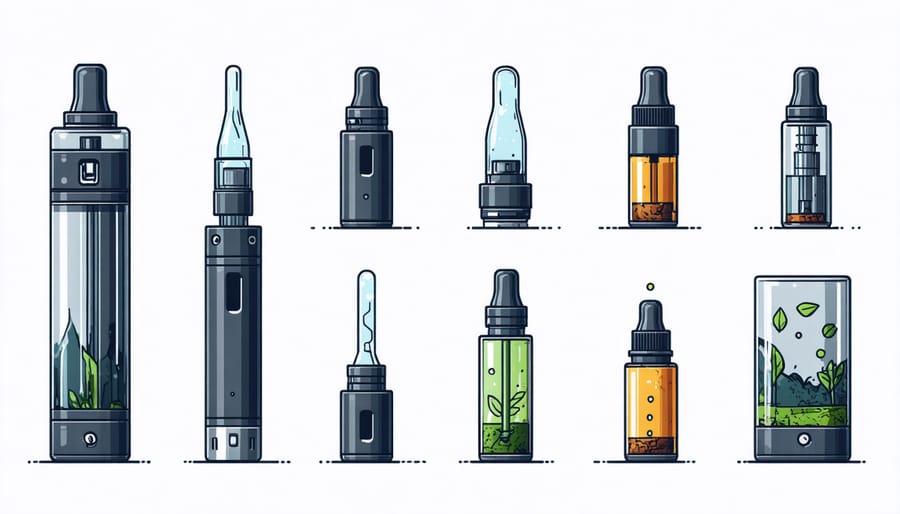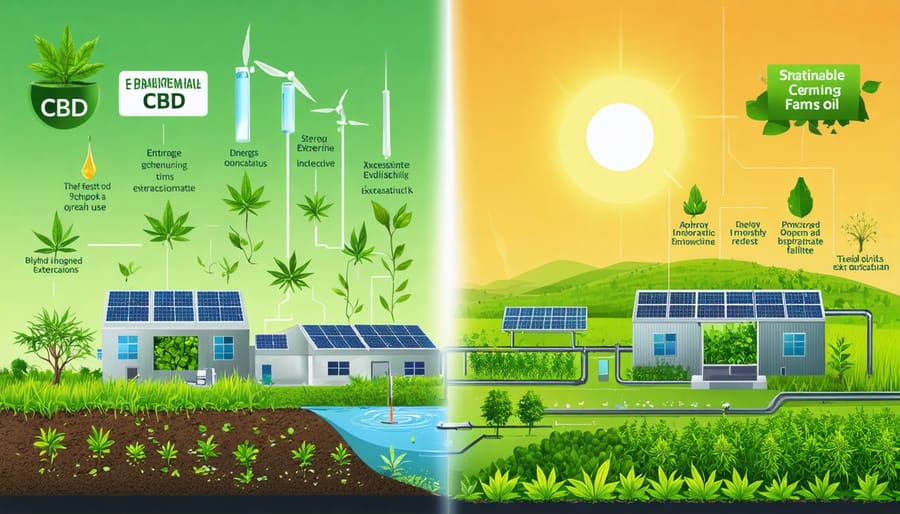Explore and analyze the environmental footprint of vaping devices and e-liquids. Conduct thorough life cycle assessments to quantify emissions and waste generated from production to disposal. Investigate the recyclability of vaping components, encouraging sustainable practices among manufacturers and consumers alike. Enhance public awareness and responsibility by visiting resources such as The Vaporist collection, emphasizing innovative solutions within the e-liquid sector. Collaborate with policymakers to establish strict environmental regulations and promote green innovations within the vaping industry.
Understanding Vaping: A Brief Overview
Vaping, a modern method of inhaling nicotine and other substances through an electronic device, has swiftly gained traction across the globe. These devices, often referred to as e-cigarettes, work by heating a liquid—commonly known as e-liquid or vape juice—to create a vapor that’s inhaled by the user. Although initially marketed as a less harmful alternative to traditional smoking, vaping has become prevalent, especially among younger adults, raising concerns not only about health but about its environmental footprint.
The widespread adoption of vaping has led to a surge in the production and disposal of e-cigarette components, such as plastic cartridges, lithium-ion batteries, and metallic coils. These materials, when discarded improperly, contribute to environmental pollution. Non-biodegradable plastics add to landfill waste, while battery components risk leaching toxic metals into soil and water systems. Moreover, the production processes for these devices demand significant energy and resources, adding to their carbon footprint.
Recognizing vaping’s environmental implications has galvanized policymakers, researchers, and environmental advocates into action. By pushing for sustainable manufacturing practices and implementing effective recycling programs, we can mitigate these impacts. Understanding the basics of vaping is crucial as we pave the way towards environmentally conscious solutions, urging everyone to consider not just personal health but the planet’s well-being in the vaping discourse.

Environmental Impact of Vaping
Production and Resource Use
The environmental impact of vaping begins with the production of vaping devices and e-liquids, both of which demand significant resource use and energy. The extraction of metals such as lithium, cobalt, and nickel required for batteries necessitates energy-intensive mining operations that contribute to environmental degradation. Additionally, manufacturing these devices involves emissions from energy use, contributing to greenhouse gas accumulation. E-liquids, which often contain propylene glycol and vegetable glycerin, are also part of the resource-intensive process. The production of these substances relies on agricultural and industrial processes that use land, water, and energy resources, further straining our environment.
Understanding these impacts empowers environmentally conscious consumers and policymakers to advocate for sustainable practices. Supporting research into green alternatives and encouraging the use of recycled materials in the production phase could significantly reduce environmental footprints. By pushing for policy changes and innovative solutions, we can mitigate the effects of vaping production on our planet, fostering a healthier and more sustainable environment for future generations.
Waste from Vaping Products
The surge in vaping popularity has inadvertently led to a growing environmental concern due to the waste produced by vaping products. E-cigarettes and vaping devices often contain several non-biodegradable components such as plastic casings, metal fragments, and lithium-ion batteries. These materials pose significant challenges to waste management systems, as they are not easily recyclable and can persist in the environment for hundreds of years. Moreover, improperly discarded vaping products can leach toxic substances like nicotine and heavy metals into soil and waterways, jeopardizing ecosystems and human health alike.
The challenge extends beyond municipal waste streams, festering in landfills where these components can cause long-term environmental damage. Additionally, the sheer volume of disposable vaping devices accentuates the problem. The recycling infrastructure is not adequately equipped to handle the unique materials and hazardous waste aspects associated with vaping, calling for innovative solutions and stricter regulations.
Addressing this issue requires a collaborative effort between policymakers, manufacturers, and consumers. Implementing policies for proper disposal and encouraging manufacturers to design products with environmentally-friendly materials are crucial steps. Consumers can also play a vital role by properly disposing of devices and advocating for more sustainable options. Together, these actions can significantly mitigate the environmental footprint of vaping, creating a healthier planet for future generations.

Impact on Water Systems
Vaping products can pose significant risks to water systems, primarily through chemical runoff and contamination. E-cigarettes and their components, such as cartridges and pods, often contain plastic, heavy metals, and nicotine residues, which can leach into water sources. When improperly disposed of, these elements can exacerbate the already pressing issue of plastic and water pollution. Nicotine and heavy metals found in e-waste are toxic to aquatic life, potentially causing harm to ecosystems and biodiversity. The presence of these chemicals in water can disrupt aquatic food chains and damage habitats, emphasizing the need for proper disposal and recycling of vaping products. Addressing this environmental challenge requires collaborative efforts from manufacturers, consumers, and policymakers to implement and enforce regulations that ensure sustainable waste management practices. By taking decisive action now, we can help safeguard our water systems for future generations.
Current Research on Vaping and the Environment
Recent studies investigating the environmental footprint of vaping have raised crucial questions about its sustainability and long-term impact. As vaping grows in popularity, researchers are examining its contributions to environmental challenges, including waste and pollution. Evidence from current research highlights several key areas of concern. One significant issue is the plastic waste generated by disposable vape products and cartridge pods. These items add to the mounting problem of plastic pollution, as seen in efforts like the plastic pollution campaign advocating for a cleaner future.
The materials used in vaping devices, such as lithium-ion batteries, metals, and plastics, present recycling and disposal challenges. Unlike traditional cigarette butts, which are notorious pollutants, the complex construction of vape products demands more sophisticated recycling processes. Unfortunately, many of these materials end up in landfills due to inadequate recycling infrastructure, posing risks to both soil and water quality.
Moreover, research underscores a lack of awareness and policies governing the disposal of vaping-related waste. Studies call for increased public education on sustainable disposal practices and the development of industry standards that prioritize environmental protection. The vaping industry’s rapid evolution also outpaces existing regulations, highlighting the necessity for adaptive policies that can mitigate environmental harm.
Despite burgeoning research efforts, significant gaps remain in our understanding of vaping’s comprehensive environmental impact, especially concerning the long-term ramifications of chemical leachates from discarded devices. Addressing these knowledge gaps requires a concerted effort among scientists, policymakers, and activists.
For environmentally conscious individuals and organizations, the call to action is clear. Emphasizing the need for sustainable design innovations, improved recycling initiatives, and responsible consumption practices will be crucial steps. Together, we can push for solutions that protect our planet while accommodating advancements in personal technology.
Government Policies and Regulatory Challenges
Government policies and regulatory frameworks play a crucial role in addressing the environmental impact of vaping, an issue of growing concern among policymakers and environmentally conscious individuals. As the popularity of vaping devices increases, attention has turned to their disposal, which can contribute significantly to electronic waste and pollution. In response, several governments are implementing policies aimed at mitigating these environmental challenges.
Many countries are emphasizing the need for extended producer responsibility (EPR) programs, mandating that manufacturers take more responsibility for the end-of-life management of their products. Such programs can incentivize the creation of more sustainable products and encourage recycling initiatives. Additionally, governments are exploring mandatory recycling programs for e-cigarette components, including batteries and cartridges, to reduce their presence in landfills and the environment.
Across the globe, there’s a notable movement towards increasing awareness and legislative action on the issue of plastic waste associated with vaping. Some regions have succeeded in passing legislation that bans certain types of non-rechargeable vape products, thus reducing the volume of disposable e-waste. Likewise, education campaigns are being launched to inform users about proper disposal methods, reinforcing the notion of personal responsibility in protecting our planet.
Nevertheless, challenges persist in creating and enforcing these policies universally. Disparities in regulatory practices between countries can hinder global cooperation, calling for a concerted international effort to develop standardized guidelines. This aligns with the broader goals of advancing environmental justice and ensuring equitable solutions in line with sustainable environmental practices. Through collaborative innovation and proactive policymaking, there’s an opportunity for governments and individuals alike to tackle these challenges head-on, driving meaningful action for a more sustainable future.

Sustainable Solutions: Pathways to Reduction
To combat the environmental impact of vaping, sustainable solutions must encompass innovative product design, comprehensive recycling programs, and proactive policy initiatives. By prioritizing eco-friendly materials, manufacturers can lead the charge in minimizing waste. Biodegradable components, such as cartridges made from compostable materials, can significantly reduce the footprint of disposed devices. Furthermore, refillable systems are a promising avenue, designed to extend product life and decrease reliance on single-use items.
A key strategy involves bolstering recycling programs. Many vapers are unaware of how to properly dispose of their devices, which often include plastic, metal, and electronic waste. Establishing accessible and well-publicized recycling centers could dramatically increase the rate of responsibly discarded vaping products. Incentive-based recycling schemes, where participants earn rewards for turning in used items, could further encourage environmentally responsible behavior.
Policy initiatives play a crucial role in driving these sustainable practices. By setting strict environmental standards for vaping products, governments can compel manufacturers to adopt green practices. Policies should also support research into novel materials and eco-friendly manufacturing processes. International collaboration can amplify these efforts, as countries share successful strategies and technologies.
Engaging with the broader spectrum of energy-saving and environmental practices, like those explored in energy initiatives, can provide inspiration and models for integration within the vaping industry. Passionate stakeholders, including environmentally conscious individuals and organizations, can push for these changes by advocating for transparency and sustainability in the production and disposal of vaping products.
In conclusion, combining innovative design, effective recycling, and robust policy action creates a powerful pathway to mitigating the environmental impact of vaping. By fostering a collaborative approach among manufacturers, policymakers, and consumers, we can strive towards a greener, more sustainable future.
Conclusion
This exploration into the environmental impact of vaping uncovers significant challenges that require urgent attention and action. The investigation highlights issues such as the disposal of non-biodegradable e-cigarette components and the environmental footprint of nicotine extraction. Such findings underscore the necessity for ongoing research to better understand these impacts and to develop sustainable alternatives. It is crucial for policymakers, researchers, and industries to collaborate in creating effective regulations and innovative technologies aimed at reducing these environmental hazards.
The transition to eco-friendly practices in vaping production and disposal presents a promising pathway toward minimizing harm. By prioritizing sustainability, the industry can contribute positively to environmental goals. Consumers also play a vital role by supporting brands that embrace greener practices and by advocating for responsible disposal methods. It is our collective responsibility to shape a future where vaping does not compromise the health of our planet.
In conclusion, engaging with these solutions not only mitigates vaping’s environmental impact but also aligns with broader efforts for environmental advocacy. By building awareness and fostering cooperation across sectors, we can drive meaningful change. Let us embrace this opportunity to advocate for a healthier Earth by making informed choices and supporting sustainable innovations in vaping technology.




